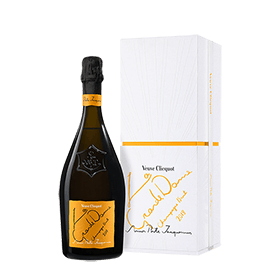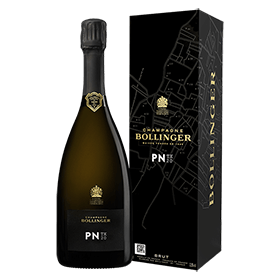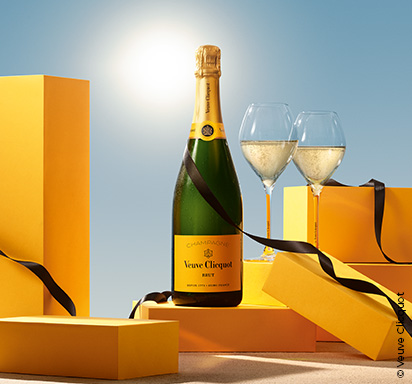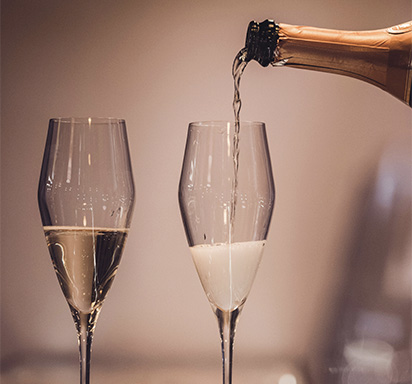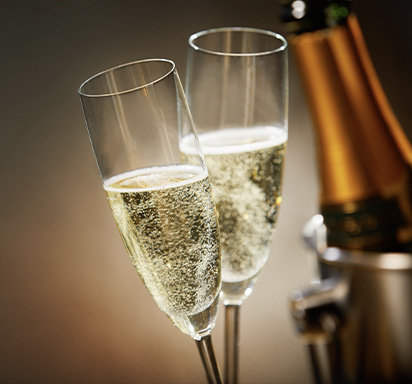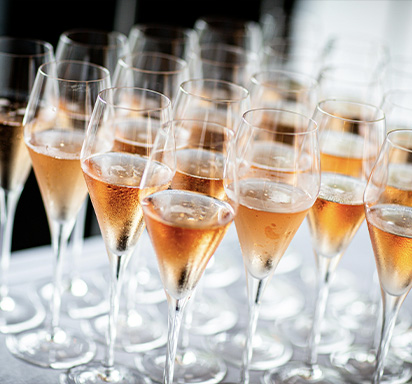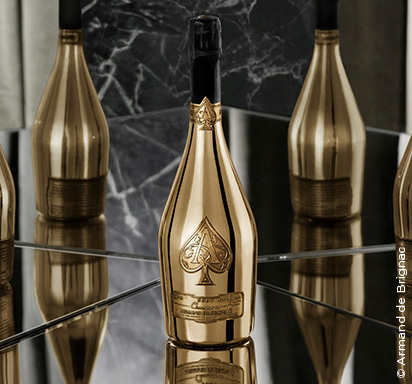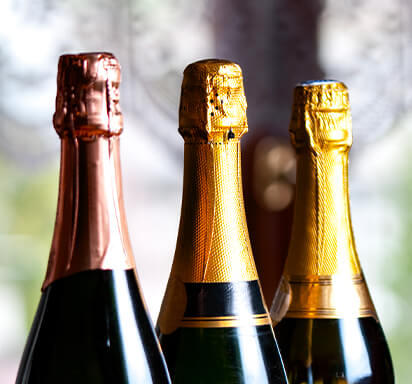Champagne bubbles: What they and where do they come from?

Champagne (or sparkling wine in general) is the wine of choice when it comes to celebration. But what sets it apart from the other fine wines of the world? The answer is simple: the bubbles.
Champagne (or sparkling wine in general) is the wine of choice when it comes to celebration. But what sets it apart from the other fine wines of the world? The answer is simple: the bubbles. There is just something about the pop of the cork and the movement of bubbles up to the surface of the Champagne bottle or glass that puts us in a festive mood. And this mood makes Champagne the perfect choice for a celebration or wine gift for a Merry Christmas or Happy New Year background.
But where do these fizzing air bubbles come from and what factors affect their behavior? Read on to learn more about Champagne bubbles!
WHAT ARE CHAMPAGNE BUBBLES?
The bubbles in Champagne (and sparkling wines in general) are made of carbon dioxide gas trapped inside the liquid in a sparkling wine bottle. In fact, carbon dioxide gas gathers in tiny imperfections or scratches in the glass (called “nucleation sites”) until bubbles form and escape upward to the surface of the liquid.
An unopened Champagne bottle contains 90 PSI of pressure, allowing the liquid to hold the gas, which remains dissolved in the wine. When the bottle is opened, the pressure is released and the gas is no longer contained in the liquid. The CO2 gas, less dense than the surrounding liquid, will therefore rise to the surface in a steady stream.
Much of what we know about Champagne bubbles comes from the research conducted on the subject by Gerard Liger-Belair at Reims University in France. For the last two decades, Gerard has been studying the factors affecting air bubble texture, the vector of air bubbles and how to perfect the Champagne tasting experience.
WHERE DO THESE BUBBLES COME FROM?
So where does the carbon dioxide gas in a bottle of Champagne come from? Champagne is produced using the traditional method or Champagne method, fabled to have been developed by Pierre Perignon in the Champagne region of France. Whoever really invented the method remains unclear. What we do know is that this method involves a second fermentation process, which takes place in the bottle.
During this second fermentation, yeasts convert sugar added to the bottle (in the form of a liqueur de tirage) into alcohol, producing carbon dioxide gas as a by-product. The gas creates pressure in the bottle, which is maintained during the disgorgement process (whereby the dead yeast cells are removed). Extended lees-aging (or aging on these dead yeast cells) gives a Champagne bottle a gold color and complex autolytic aromas of brioche and toasted nuts as well as fruit and flowers.
For more information on how Champagne is made, take a look at our What is Champagne article!
WHY DOES CHAMPAGNE LOSE ITS BUBBLES?
Bubbles are what give Champagne the sensation of being “alive” and fizzy. So what happens when a glass of Champagne goes flat? As carbonated water, soda or Champagne bubbles rise to the surface of the liquid, they break and release the carbon dioxide inside into the atmosphere. When all of the carbon dioxide dissolved in the liquid has escaped, the Champagne goes flat and becomes a still wine. How long does Champagne last? That depends on the type and storage conditions.
For advice on how to keep a bottle of Champagne bubby for as long as possible, take a look at our article “How to Store Champagne?”
In the case of vintage champagne, which are lauded for their significant aging potential, the longer they age in bottle, the more acidic and less bubbly they become. While vintage champagne aged a decade or longer may become less bubbly, it will reveal exquisite and sought-after tertiary aromas, including honey and toffee.
HOW DO DIFFERENT CHAMPAGNE GLASSES AFFECT THE BUBBLES?
The three most popular Champagne glasses are the flute glass (with its long stem and bowl), the coupe glass (with its shallow bowl and short stem) and the tulip glass (similar to a flute but with a wider bowl tapering at the mouth). The shape of each glass significantly affects the behavior of the bubbles in the Champagne and thus influences the tasting experience. So which glass is best?
According to Gerard Liger-Belair, neither flute nor coupe is ideal. As bubbles rise to the top of a glass of Champagne, they induce flow patterns and stir the liquid, bringing to the forefront complex nuances of flavor. In a flute, this flow pattern is stronger and stirs the liquid more than in a coupe, which is beneficial for the tasting experience. However, the narrow opening of a flute glass concentrates the CO2 at the top, which irritates the nose and thus affects the aromas and taste.
In a coupe glass, the wide rim dilutes the effect of the CO2 at the surface. However, this glass shape does not encourage a strong enough flow pattern, which means that the bubbles fail to bring the deeper nuances of flavor to the surface. The best option for the enjoyment of Champagne is thus the tulip glass or a regular white wine glass. For more information on the various kinds of Champagne glasses, take a look at our article entitled “How to hold a Champagne glass”!
WHAT ABOUT THE BUBBLES IN OTHER SPARKLING WINES?
As discussed in our Sparkling Wine vs Champagne article, the difference between Champagne and other sparkling wines come mainly from differences in production method, grape varieties used and places of origin. Out of these key differences, production method has the most affect over the bubbles’ texture set and behavior. Let’s take a look at some of the different sparkling wine production techniques and the kinds of bubbles they form.
• The Champagne Method (or Méthode Champenoise, Traditional Method or Classic Method): Used to produce Champagne, Franciacorta, Cava and many French Crémant wines, this method involves a second fermentation in the bottle. Generally speaking, this method produces very small, fine and long-lasting bubbles.
• The Charmat Method (or Tank Method): Used to produce Prosecco and Lambrusco, the Charmat method involves secondary fermentation in a tank. This method usually produces sparkling wines with larger and more explosive bubbles, which do not last very long.
• The Transfer Method: Often used to produce large format traditional method sparkling wines like Champagne, Franciacorta or Cava, the transfer method involves secondary fermentation in the bottle, followed by a transfer to a pressurize tank and then bottling under pressure. This method typically makes small, fine, long-lasting bubbles.
• The Continuous Method: Normally only used for bulk German sekt sparkling wine production, this method involves adding a liqueur de tirage continuously to the base wine, pumped through pressurized tanks. Like the tank method, it creates large bubbles that do not last very long.
• The Ancestral Method: Used to produce petillant naturel (or pet-nat), this method is the oldest and involves bottling the wine before the first fermentation is complete. The fermentation finishes under the cork, leaving behind the lees as sediment in the bottle. This method creates very well integrated, fine bubbles that last long.
• Carbonation: The most commercial method, carbonation involves the direct injection of carbon dioxide into wine. It creates bubbles similar to those of soda: large, frothy and very short-lived.
Did you enjoy this article? Do not hesitate to share on Facebook, Instagram, Twitter or Linkedin. Are you asking yourself “Where can I find champagnes near me?” Take a moment to look through our extensive selection of Champagnes from top producers in France or contact our team directly for advice on which bottle to choose for your special occasion!
You may like
Discover the best champagnes under $100 — Moët, Veuve Clicquot, Ruinart, and Laurent-Perrier. Elegant, flavorful, and celebratory, they’re perfect gifts for wine lovers and anyone who cherishes the sparkle of fine champagne.
11/6/2025Brut and Extra Dry Champagne differ in sweetness, with Brut being drier and Extra Dry slightly sweeter. Learn their flavor profiles, food pairings, and which one suits your preference for celebrations and special occasions.
3/17/2025Prosecco and Crémant are both sparkling wines, but their differences lie in production methods, flavor, and origin. Learn about the Charmat and traditional methods, the taste profiles, and the best food pairings for each wine.
1/31/2025Whether you're hosting a small party or a large-scale event, Champagne is the perfect companion for any celebration. But do you know how many bottles to order for your event? Find out now!
1/17/2025Armand de Brignac, the "Ace of Spades," blends centuries-old winemaking by the Cattier family with Jay-Z's flair. Known for its luxurious taste and iconic hand-finished bottles, it offers five prestigious cuvées.
10/8/2024Nothing screams celebration quite like popping open a fine bottle of Champagne at one of your special events. But how do you choose a bottling that matches your event? For a wedding, a meal with friends or a birthday celebration..
4/3/2023


